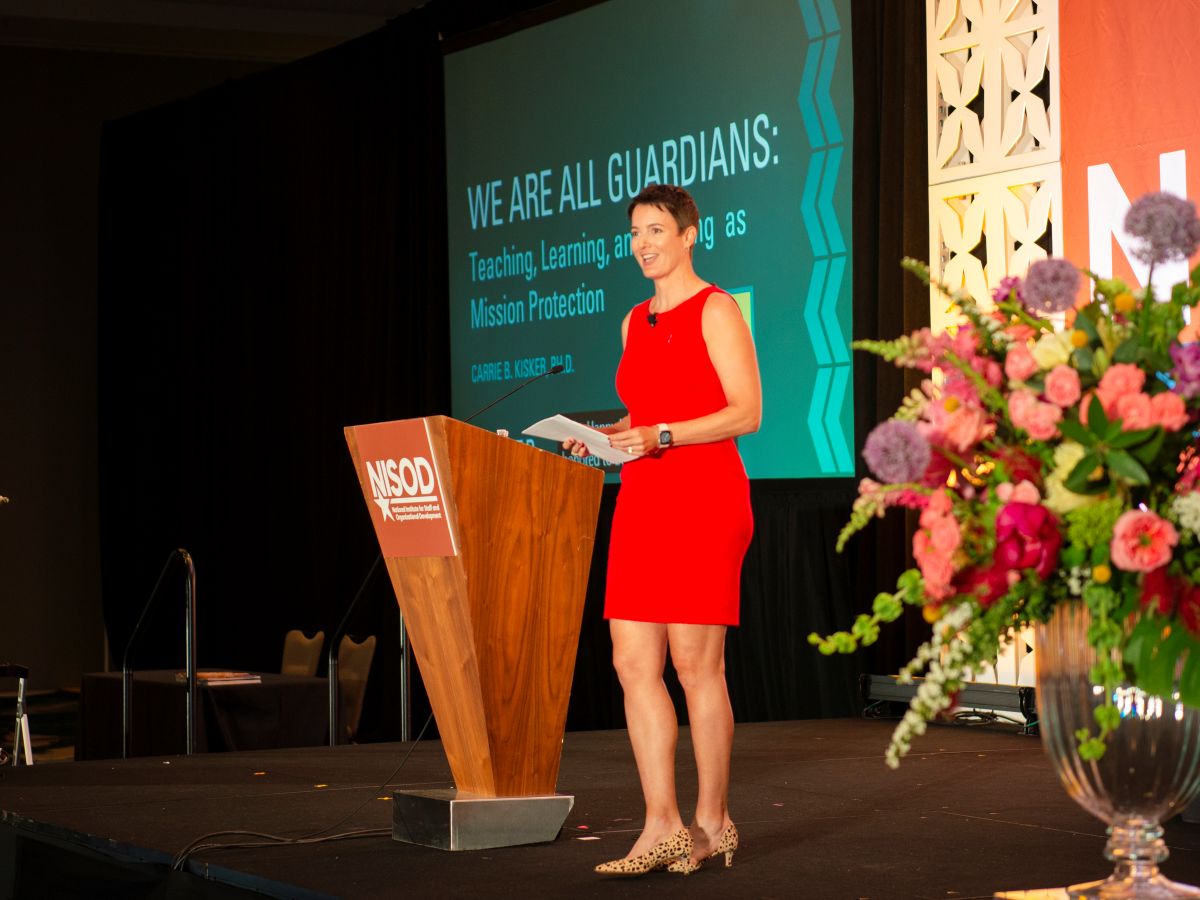By: Tom White
There’s a persistent myth in American culture that education is a linear climb, ideally beginning at a prestigious residential four-year university and ending somewhere between an Ivy League degree and a job with a Patagonia vest dress code. While this narrative is common, community colleges are often overlooked, despite the fact that they play a significant role in educating nearly 40% of the country’s undergraduate students. Despite their crucial role, they remain subject to deep-rooted misconceptions that can have negative impacts, both on the institutions themselves and the students they serve, as well as the communities they sustain.
As Dr. Carrie B. Kisker, a leading researcher and advocate in higher education, points out: “Community colleges are a vital component of American higher education. Not only do they provide access to the system, but they help support mobility within it, enabling students of various backgrounds to pursue the American Dream. Community colleges are also closely connected to the economic health and prosperity of local communities. Unfortunately, due in large part to recent efforts to question the value of higher education, many Americans have become skeptical about the benefits of the system. While much of the distrust is often aimed at the most selective institutions, it tends to harm institutions like community colleges the most, particularly those that educate students from marginalized groups—those who are less likely to be encouraged to attend college at all.”
In that spirit, here are five myths about community colleges and the truths that deserve more attention.
1. Community college is just for students who couldn’t get in elsewhere
This stereotype can be subtly harmful. It suggests that community colleges are fallback options for students who weren’t smart or ambitious enough for a four-year institution. In reality, community colleges serve a diverse student population: working adults returning to education or training, high-achieving high school students earning dual credit, high-achieving high school graduates taking honors courses, first-generation college-goers, and those who prefer or need to stay close to home. Additionally, students who opt to start locally at a community college often save substantial amounts of money and then transfer to universities. Their motivations are varied, but none of them suggest a lack of intelligence or ambition.
2. You get what you pay for, so community colleges must be lower quality
Because community colleges are more affordable by design, they are often mistakenly seen as offering a less rigorous or less valuable education. However, the pedagogical focus at many of these institutions is well-established and, in some cases, more individualized than what you might find at large lecture-hall-filled universities. Smaller class sizes, professors trained in teaching rather than research, and more intentional student-professor relationships contribute to a highly engaged learning environment. Many community colleges also offer honors programs, opportunities for research, internships, apprenticeships, and applied bachelor’s degrees, all of which can offer valuable experiences and education that rival those found at larger institutions.
3. Community colleges only offer two-year degrees, so they are not for serious students
It is true that community colleges have traditionally awarded associate degrees and certificates. But the landscape has changed. More institutions are now offering applied baccalaureate degrees and other credentials designed to prepare students directly for the workforce. Furthermore, transfer pathways to four-year universities have become more accessible and streamlined than ever. A student could attend a community college, transfer to a reputable university, and graduate with less debt and more clarity about their educational path. Alternatively, they could choose to complete their bachelor’s at the community college and transition into a well-paid position in a high-demand industry.
4. Community colleges are not real colleges because they are local and/or online
The rise of remote learning after COVID has blurred the lines between online, hybrid, and in-person learning entirely. Today, almost every college offers some online component. Community colleges were among the first to embrace flexible hybrid and online models, and their ability to meet students where they are should be seen as a strength, not a limitation. Local does not mean limited. For many, it means accessible, practical, and deeply connected to the economic and cultural needs of a community.
5. Employers do not value community college degrees
Hiring managers sometimes hold implicit biases against community college graduates, assuming they are not polished or sophisticated enough for competitive roles. But many employers have found that by overlooking these candidates, they miss out on some of the most adaptable, resilient, and hard-working individuals in the job market. Community college students often juggle multiple jobs, family responsibilities, and their education all at once. They bring real-world problem-solving skills, deep empathy, and determination shaped by experience, not just theory. As Dr. Kisker notes, “Instead of automatically dismissing the resumes of candidates who attended community colleges, more and more hiring managers are choosing to give them serious consideration, discovering that these prospective employees possess many of the skills sought in today’s workforce, including strong communication, collaboration skills, and an innate drive to work hard and innovate.”
Misconceptions about community colleges and their students not only distort public perceptions of the value of higher education, but they can actively disrupt lives. They discourage bright, motivated people from seeing themselves as college material. They may reduce funding for programs that fuel the workforce, lead some employers to overlook excellent candidates, and undermine confidence in a critical aspect of the American higher education system that is affordable, flexible, and genuinely dedicated to the public good.
It is time to look beyond the myths. If we do not work to preserve, protect, and value all that community colleges and their students do for our workforce and society, we risk further limiting one of the most accessible and impactful pathways to opportunity, prosperity, and the American Dream.

What You Can Do
If you care about expanding access to meaningful, equitable postsecondary education, or if you’re ready to challenge outdated narratives, it is time to take a closer look at the role community colleges play. These institutions are not just stepping stones; they are launchpads for economic mobility, social justice, and lifelong learning. Rethinking the way we talk about and invest in them is important for building a more inclusive and resilient higher education system.
Here are a few concrete ideas for how you can support community colleges and their students:
- If you are an employer, reach out to your local community college to learn how you may be able to support programs preparing students for work in your industry. Ask if you can interview graduates, donate equipment, or speak with faculty about the skills and abilities needed for your future workforce.
- If you are a high school student or parent, explore opportunities for dual enrollment at your local community college. This will not only give you a head start on college (saving thousands of dollars), but will also better prepare students for success at any future institution.
- If you are a policymaker or business owner, consult with college presidents and trustees in your region to ask how you can better support their work and build capacity for economic and community growth.
- If you are a college leader interested in growing your capacity for innovation, especially related to partnerships with external businesses and community organizations, consider utilizing Kisker Education Consulting to help manage strategic change and innovation processes on campus.
- If you are a member of the media or any other organization seeking to learn or write more about institutions that strengthen communities, visit the Center for the Study of Community Colleges (CenterforCommunityColleges.org) or contact Dr. Carrie B. Kisker via KiskerEdConsulting.com
Finally, anyone interested in the major challenges or issues community colleges face, or who wants to learn more about the people who attend, teach in, lead, or study these institutions, will enjoy listening to the SPOTLIGHT ON COMMUNITY COLLEGES Podcast, available wherever you get your podcasts.

















